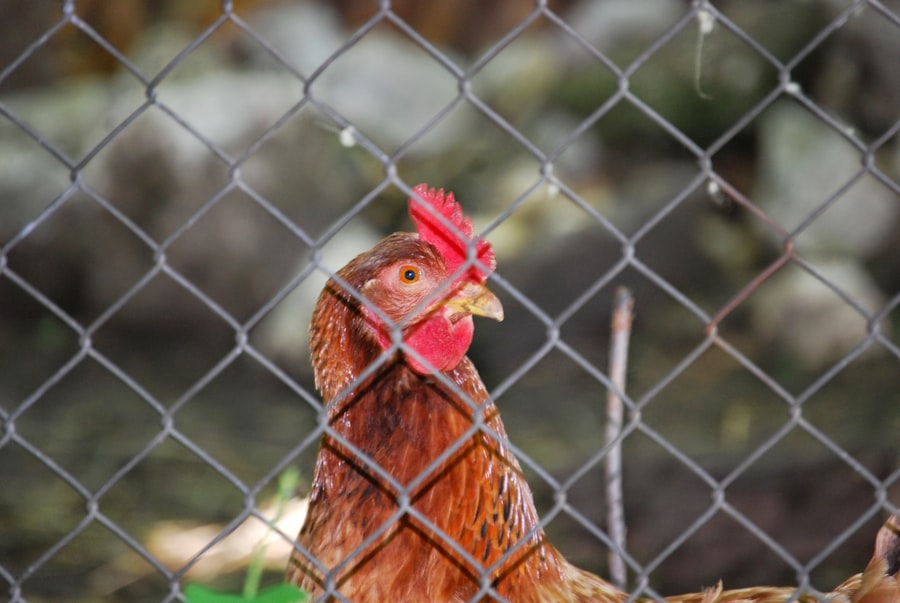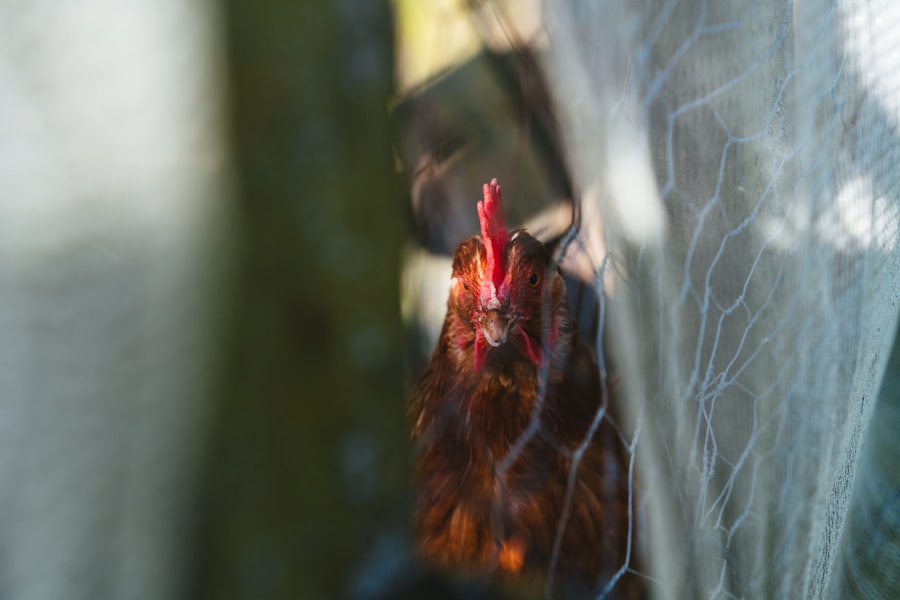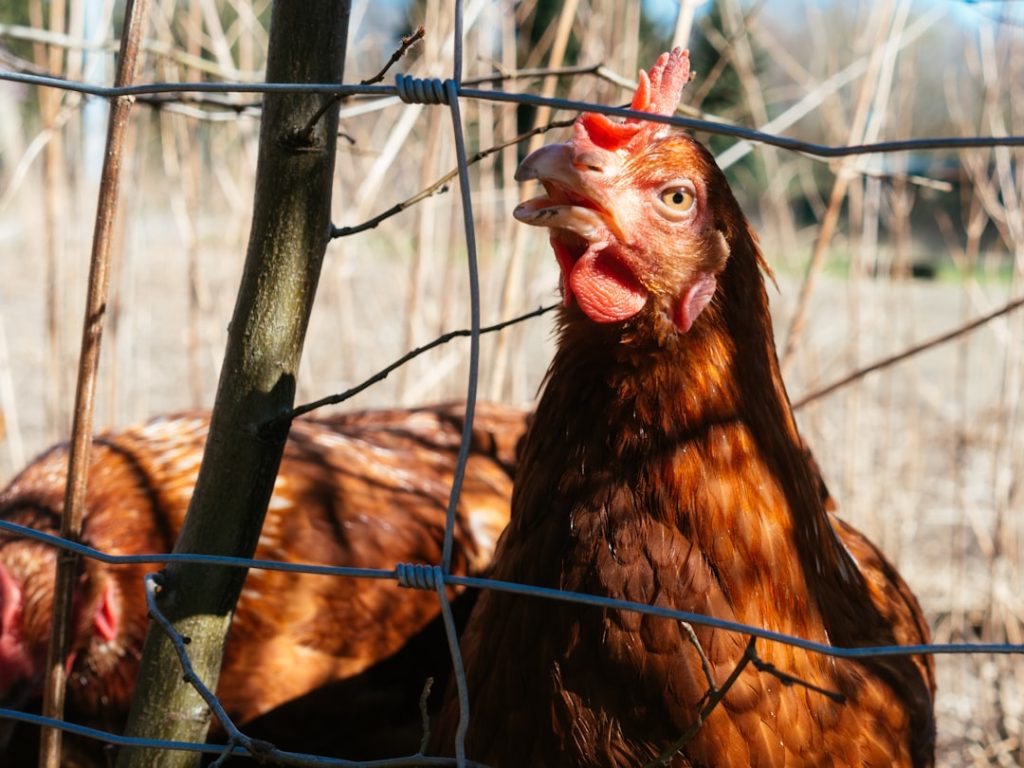Free range chickens possess natural instincts that drive their behavior and movement patterns. These birds are inherently curious and active, with a strong inclination to roam and forage for food. Their innate desire to scratch and peck at the ground in search of insects, seeds, and other edible items is deeply rooted in their genetic makeup and is crucial for their overall well-being.
Within a flock, chickens establish a social hierarchy known as a pecking order. This hierarchical structure can lead to territorial behavior and a propensity to explore new areas. Free range chickens also have the ability to fly short distances, enabling them to clear low obstacles in pursuit of fresh foraging grounds.
These birds are highly social creatures that thrive in the company of their own kind. They rely on their flock for protection and companionship, which can sometimes motivate them to wander in search of other chicken groups or to explore unfamiliar territories for food and shelter. Understanding these natural behaviors is essential for effectively managing free range chickens in a domestic setting.
By recognizing and accommodating their innate instincts, caretakers can implement strategies to ensure the chickens’ safety and containment while still allowing them to express their natural behaviors. Providing a secure and stimulating environment within a designated area can help satisfy their instincts and reduce the likelihood of them straying into neighboring properties.
Table of Contents
- 1 Creating Physical Barriers to Keep Chickens in Your Yard
- 2 Using Natural Deterrents to Discourage Chickens from Roaming
- 3 Implementing Training and Reinforcement Techniques for Chickens
- 4 Communicating with Your Neighbors about the Issue
- 5 Seeking Professional Help for Persistent Chicken Roaming
- 6 Legal Considerations for Free Range Chicken Ownership
- 7 FAQs
- 7.1 What are free range chickens?
- 7.2 Why might free range chickens wander into a neighbor’s yard?
- 7.3 How can I keep free range chickens out of my neighbor’s yard?
- 7.4 Is it legal for free range chickens to roam into a neighbor’s yard?
- 7.5 What should I do if my free range chickens are causing issues in a neighbor’s yard?
Key Takeaways
- Free range chickens exhibit natural behaviors such as foraging, dust bathing, and exploring their environment.
- Physical barriers such as fences, chicken wire, and netting can help keep chickens within the boundaries of your yard.
- Natural deterrents like citrus peels, vinegar, and predator decoys can discourage chickens from roaming into unwanted areas.
- Training techniques such as positive reinforcement and using treats can help teach chickens to stay within designated areas.
- Communicating with neighbors about your free range chickens can help address any concerns and find mutually beneficial solutions.
Creating Physical Barriers to Keep Chickens in Your Yard
Creating Physical Barriers
One effective way to keep free range chickens in your yard is by creating physical barriers that prevent them from wandering into neighboring properties. This can be achieved by installing a sturdy fence around the perimeter of your yard that is tall enough to prevent chickens from flying over it. Additionally, adding a wire mesh skirt at the base of the fence can deter chickens from digging underneath it.
Securing the Fence
It’s important to ensure that the fence is securely anchored to the ground to prevent any gaps or weak spots that chickens could exploit. Another option for creating physical barriers is to use chicken wire or netting to enclose specific areas within your yard where you want to contain the chickens. This can be particularly useful for protecting garden beds or sensitive landscaping from foraging chickens.
Designating Roaming Areas
By creating designated areas for the chickens to roam, you can control their access to certain parts of your yard while still allowing them some freedom to explore and forage. In addition to fences and netting, you can also use natural barriers such as hedges or dense shrubbery to create boundaries within your yard. These natural barriers can serve as visual cues for the chickens, helping them understand the limits of their roaming area.
Creating a Secure and Visually Appealing Environment
By combining physical barriers with natural elements, you can create a secure and visually appealing environment that keeps free range chickens contained within your yard.
Using Natural Deterrents to Discourage Chickens from Roaming

In addition to physical barriers, natural deterrents can be used to discourage free range chickens from roaming into unwanted areas. One effective deterrent is the use of predator decoys such as fake owls or hawks. These decoys can be placed strategically around the perimeter of your yard to create the illusion of a predator presence, which can deter chickens from venturing too far from their safe zone.
Another natural deterrent is the use of aromatic plants and herbs that are known to repel chickens. Plants such as lavender, mint, and rosemary emit strong scents that chickens find unpleasant, which can help discourage them from entering certain areas of your yard. By strategically planting these deterrent plants around sensitive areas, you can create a natural barrier that deters chickens from roaming where they are not wanted.
Additionally, you can use sound as a deterrent by installing motion-activated devices that emit loud noises when triggered by chicken movement. These devices can startle the chickens and discourage them from venturing into restricted areas. By combining natural deterrents with physical barriers, you can create a multi-layered approach to keeping free range chickens contained within your yard.
Implementing Training and Reinforcement Techniques for Chickens
Training and reinforcement techniques can be used to teach free range chickens boundaries and encourage them to stay within designated areas of your yard. One effective method is the use of positive reinforcement, such as providing treats or rewards when the chickens stay within their designated roaming area. By associating positive experiences with staying within the boundaries, you can encourage the chickens to voluntarily remain within the desired areas.
Another training technique is the use of visual cues, such as brightly colored flags or markers, to define the boundaries of the chickens’ roaming area. By consistently reinforcing these visual cues during training sessions, you can help the chickens understand where they are allowed to roam and where they should avoid. Consistency is key when implementing training techniques, as it helps reinforce the desired behaviors over time.
In addition to positive reinforcement and visual cues, you can also use gentle redirection techniques to guide the chickens back into their designated area when they stray too far. This can be achieved by calmly herding the chickens back towards the desired area using gentle movements and vocal cues. By consistently applying these training and reinforcement techniques, you can help free range chickens understand and respect the boundaries of your yard.
Communicating with Your Neighbors about the Issue
Open communication with your neighbors is essential when addressing issues related to free range chicken roaming. It’s important to discuss any concerns or potential conflicts with your neighbors in a respectful and proactive manner. By openly addressing the issue and seeking input from your neighbors, you can work together to find mutually beneficial solutions that address their concerns while still allowing your chickens to roam within your yard.
One approach to communicating with your neighbors is to proactively share your plans for managing your free range chickens and address any potential concerns they may have. By being transparent about your efforts to contain the chickens within your yard, you can demonstrate your commitment to being a responsible chicken owner and a considerate neighbor. Additionally, seeking feedback from your neighbors on potential solutions can help foster a sense of collaboration and understanding.
In some cases, it may be necessary to negotiate specific boundaries or agreements with your neighbors regarding the roaming behavior of your free range chickens. By engaging in open and respectful dialogue, you can work towards finding compromises that address any concerns while still allowing your chickens some freedom to roam within your property. Building positive relationships with your neighbors through effective communication can help prevent potential conflicts related to free range chicken roaming.
Seeking Professional Help for Persistent Chicken Roaming

Expert Assessment and Personalized Solutions
Professional help typically involves on-site assessments of your property and chicken behavior, as well as personalized training plans designed to address specific roaming issues. These experts can offer valuable advice on implementing training techniques, reinforcement strategies, and environmental modifications tailored to your unique situation.
In some cases, professional help may also involve collaborating with local animal control authorities or agricultural extension services to address persistent roaming issues in a proactive and responsible manner. These organizations may offer additional resources and support for managing free-range chicken behavior, including guidance on legal considerations, community outreach, and conflict resolution with neighbors.
Demonstrating Responsible Chicken Ownership
Seeking professional help demonstrates a proactive approach to addressing persistent roaming issues and shows a commitment to responsible chicken ownership. By leveraging the expertise of professionals, you can gain a deeper understanding of free-range chicken behavior and access specialized support for managing persistent roaming challenges.
Legal Considerations for Free Range Chicken Ownership
When keeping free range chickens on your property, it’s important to be aware of any local ordinances or regulations that may apply to chicken ownership and roaming behavior. Some municipalities have specific guidelines regarding the containment of livestock animals, including requirements for fencing, zoning restrictions, and noise ordinances. Familiarizing yourself with these legal considerations is essential for ensuring compliance with local laws and regulations related to free range chicken ownership.
In addition to local ordinances, it’s important to consider any homeowners’ association rules or covenants that may impact free range chicken ownership and roaming behavior within your neighborhood. Some homeowners’ associations have specific guidelines regarding animal husbandry practices, property maintenance standards, and nuisance regulations that may affect how you manage free range chickens on your property. Understanding these legal considerations can help prevent potential conflicts with neighbors and ensure that you are in compliance with community regulations.
Furthermore, it’s important to consider liability issues related to free range chicken roaming, particularly if your chickens stray onto neighboring properties or public areas. In some cases, property owners may be held responsible for any damage or disturbances caused by their animals, including free range chickens. Understanding your legal responsibilities as a chicken owner can help mitigate potential risks and liabilities associated with roaming behavior.
In conclusion, understanding the behavior of free range chickens is essential for effectively managing their roaming tendencies within your yard. By creating physical barriers, using natural deterrents, implementing training techniques, and seeking professional help when needed, you can address persistent roaming issues while still allowing your chickens some freedom to exhibit their natural behaviors. Open communication with neighbors and awareness of legal considerations are also crucial for fostering positive relationships within your community and ensuring compliance with local regulations related to free range chicken ownership.
By taking a proactive and responsible approach to managing free range chicken roaming, you can create a harmonious environment that benefits both your chickens and your neighbors.
If you’re looking for tips on how to keep free range chickens out of your neighbor’s yard, you may also be interested in learning about how to care for goslings. Check out this article for helpful information on raising and caring for goslings.
FAQs
What are free range chickens?
Free range chickens are poultry that are allowed to roam freely and forage for food, rather than being confined to a coop or small enclosure.
Why might free range chickens wander into a neighbor’s yard?
Free range chickens may wander into a neighbor’s yard in search of food, water, or a place to nest. They are naturally curious and may explore beyond their own territory.
How can I keep free range chickens out of my neighbor’s yard?
There are several methods to keep free range chickens out of a neighbor’s yard, including installing a fence, using deterrents such as motion-activated sprinklers or noise devices, and providing alternative food and water sources in your own yard to discourage them from venturing elsewhere.
Is it legal for free range chickens to roam into a neighbor’s yard?
Laws regarding free range chickens vary by location, so it’s important to check local ordinances and regulations. In some areas, there may be laws governing the roaming of livestock, including chickens, and potential consequences for owners if their animals cause damage or nuisance to neighbors.
What should I do if my free range chickens are causing issues in a neighbor’s yard?
If your free range chickens are causing problems in a neighbor’s yard, it’s important to communicate with the neighbor and work together to find a solution. This may involve implementing measures to keep the chickens contained to your own property, such as building a fence or providing adequate food and water sources. If necessary, seek guidance from local authorities or animal control.
Meet Walter, the feathered-friend fanatic of Florida! Nestled in the sunshine state, Walter struts through life with his feathered companions, clucking his way to happiness. With a coop that’s fancier than a five-star hotel, he’s the Don Juan of the chicken world. When he’s not teaching his hens to do the cha-cha, you’ll find him in a heated debate with his prized rooster, Sir Clucks-a-Lot. Walter’s poultry passion is no yolk; he’s the sunny-side-up guy you never knew you needed in your flock of friends!







